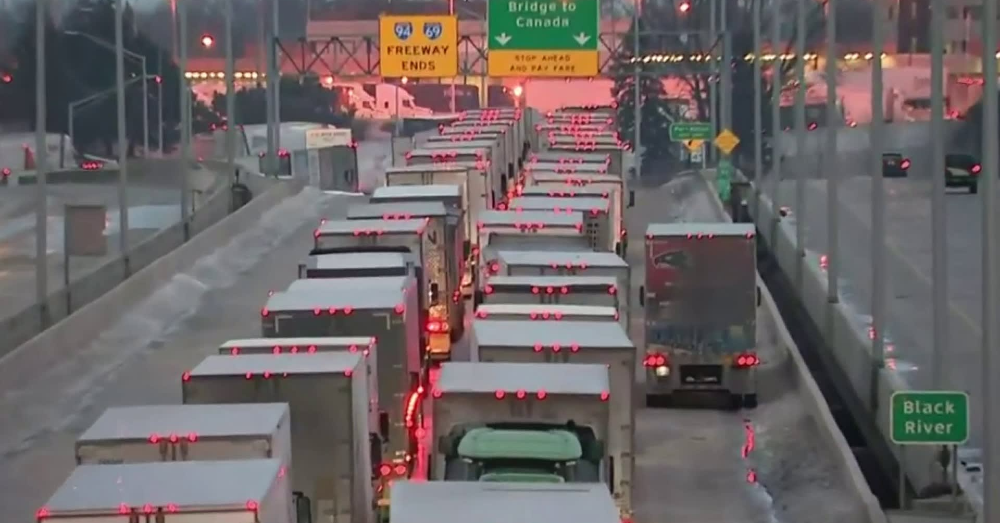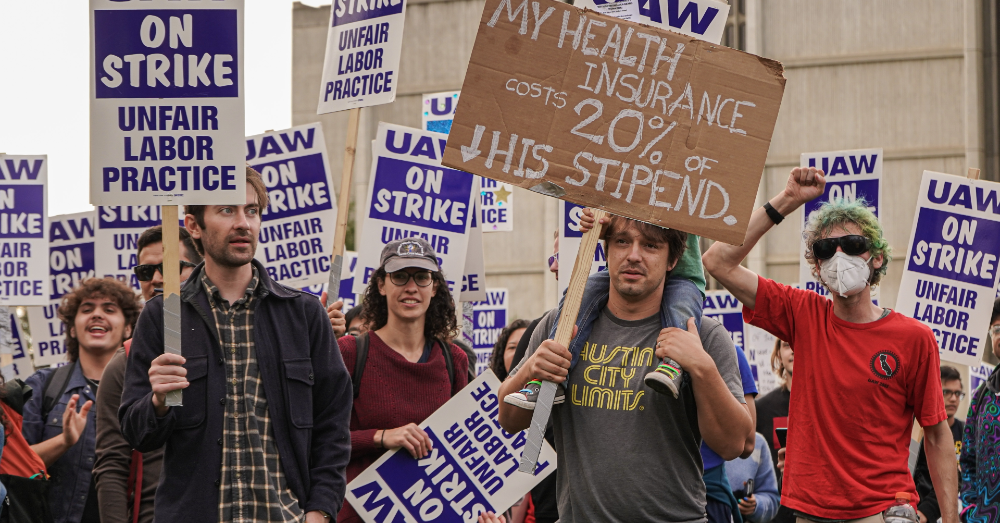
Auto Supply Chain Faces New Challenge with Border Bridge Blockade
Now there’s a border blockade slowing down the auto supply chain, impacting the industry in the United States.
Hasn’t the automotive industry endured enough?
This blockade stands in the way of the border crossing between the United States and Canada. While strong, longstanding relationships between these two countries should make this situation avoidable, there’s something else at play here.
Canada Continues to Stand Firm on COVID-19 Restrictions
Truckers are blocking the bridge crossing at the Ambassador Bridge, which connects Detroit and Windsor, Ontario. This bridge is a major crossing between the two countries. It serves as the main highway where materials needed for many industries pass through. Shutting down this passageway hampers many parts of the United States, creating a stressful situation for workers around the country. The truckers parked in the pathway of this bridge are doing so in protest of the strict COVID-19 vaccine mandates. Semi drivers entering Canada must show proof of vaccination at the border. They are hoping to push the Canadian government to rescind these mandates. So far, the Canadian government hasn’t budged on this requirement.
The Auto Supply Chain Needs to Move
Leaders from various organizations are extremely concerned about the disruption to the auto supply chain. This additional strain is causing undue stress to an industry that’s faced many problems during the past two years. Automakers in America have already cut production. This means laying off workers or reducing hours, which may continue until the bridge reopens. Many auto workers spent the last two years with financial uncertainty, first because of the COVID-19 pandemic that shut down the entire world and again when the shortage of semiconductor chips hit the industry.
Currently, automakers are doing everything possible to maximize production with materials and supplies in stock. Unfortunately, if the trucks aren’t moving, their supplies aren’t getting where they need to go. This is causing problems for companies that need the supplies.
President Biden is Actively Trying to Resolve the Problem
Although the President is working to persuade the Canadian government to open the bridge his influence only goes so far. Automakers in the U. S. state they appreciate what he’s done so far but ask that his administration ramp up efforts to reduce the disruption this blockade continues to cause. Of course, leaders in the automotive industry also urge the Canadian government to move swiftly to get the trucks moving again so the supplies can reach their destinations as needed.
The Michigan Governor, Gretchen Whitmer, also urged Canadian authorities to resolve the blockage to allow traffic to flow and the auto supply chain to move forward once again. She further asks the federal, local, and provincial governments in Canada to safely reopen the traffic to avoid an economic crisis caused by one crossing between the two countries.
When Will the Bridge Reopen?
As government officials on both sides focus on opening the Ambassador Bridge safely and effectively, they are facing one serious problem. If they order the trucks moved, a fleet of heavy-duty tow trucks is required to remove the trucks blocking the way. Many of those tow truck drivers sympathize with the truckers blocking the border crossing, which means they might not be willing to move the trucks in the way. This is truly a tough situation and one that’s hampering the auto supply chain flow.
This post may contain affiliate links. Meaning a commission is given should you decide to make a purchase through these links, at no cost to you. All products shown are researched and tested to give an accurate review for you.



